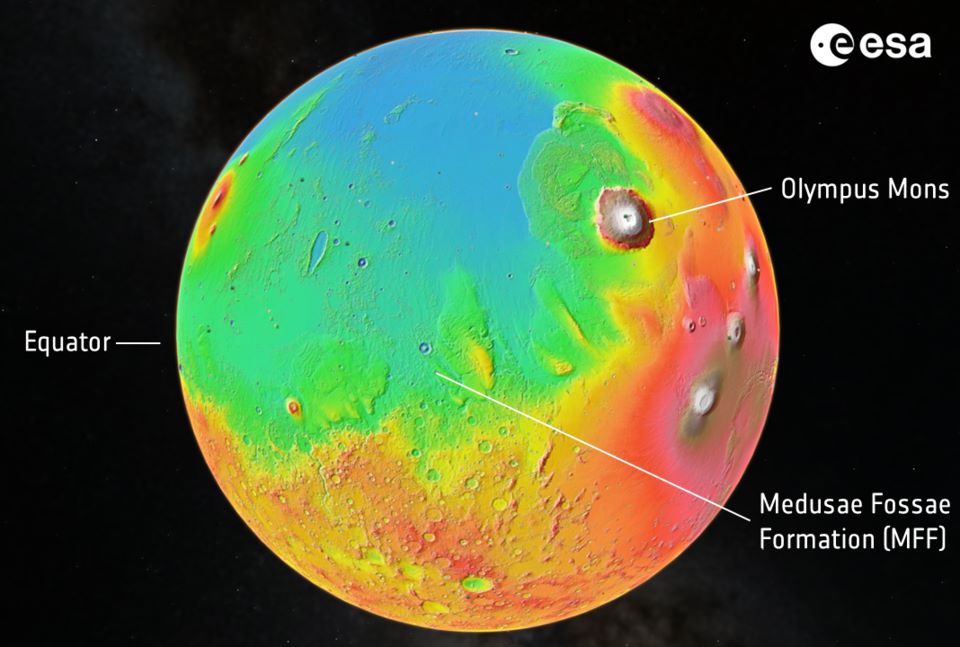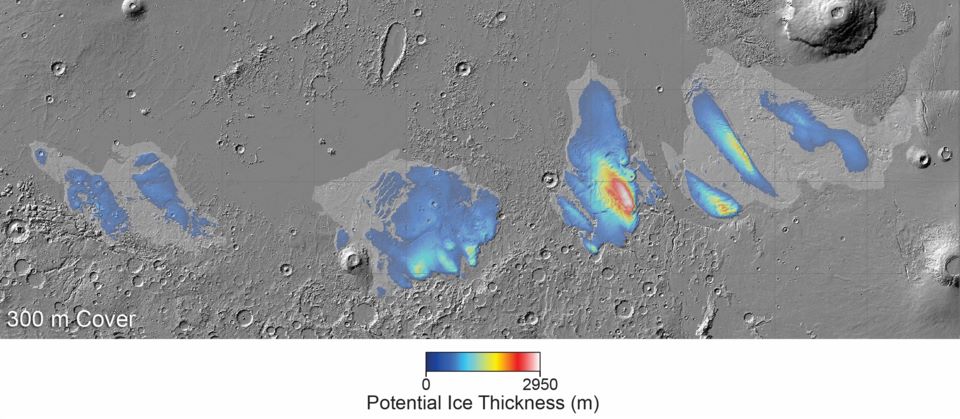Huge deposits of ice discovered at Mars equator
More than 15 years ago, the European Space Agency's Mars Express mission scrutinized a region near the equator called Medusae Fossae Formation (MFF), uncovering substantial deposits reaching depths of up to 2.5 km.
At that time, the composition of these deposits remained uncertain, with some scientists believing they were made of volcanic ash, and it was only recently that new research has provided a definitive answer: it’s ice.
The presence of ice at Mars’ pole caps was confirmed earlier and the idea of ice deposits at the equator is intriguing.
More to read:
Scientists could “see” the composition of Mars’ core for the first time ever
If melted somehow, the entire Martian ice would form an ocean to cover the entire planet – albeit not as deep as we’d think – the water layer would be just 1.5 to 2.7 meters, according to an ESA statement based on the study published in the Geophysical Research Letters (Advanced Earth and Space Sciences).

“We’ve explored the MFF again using newer data from Mars Express’s MARSIS radar, and found the deposits to be even thicker than we thought: up to 3.7 km thick. Excitingly, the radar signals match what we’d expect to see from layered ice, and are similar to the signals we see from Mars’s polar caps, which we know to be very ice rich,” says Thomas Watters of the Smithsonian Institution, the U.S., lead author of both the new research and the initial 2007 study.
The presence of ice at the Red Planet's equator is a particularly exciting discovery, because it makes an attractive potential location for future explorers to visit.
However, reaching for the ice to turn it into water at the MFF won’t be easy - the findings suggest layers of dust and ice being trapped beneath a protective pile of dry dust or ash several hundred meters thick.

Although Mars now appears to be an arid world, the planet’s surface is full of signs that water was once abundant, including dried-up river channels, ancient ocean and lake beds, as well as water-carved valleys. Mars missions have also found significant stores of water ice on Mars, such as the enormous polar caps, buried glaciers nearer the equator, and near-surface ice laced through Martian soil.
More to read:
NASA awards 900,000-dollar grant for Mars oxygen extraction research
Massive stores of ice near the equator – such as those suspected to lurk below the dry surface of the MFF – couldn’t have formed in the planet’s present climate. They must have appeared in a previous climate epoch.
And now a question of all mother questions: if there was water, did Mars ever harbor life?
***
NewsCafe is a small, independent outlet that cares about big issues. Our sources of income amount to ads and donations from readers. You can buy us a coffee via PayPal: office[at]rudeana.com.




![[video] Guess who’s hiding more than 8 kilometers below the ocean’s surface?](/news_img/2025/11/13/news0_mediu.jpg)
![[video] Putin rules from shadows: Investigation finds Russian leader rarely works in Moscow](/news_img/2025/11/11/news1_mediu.jpg)

